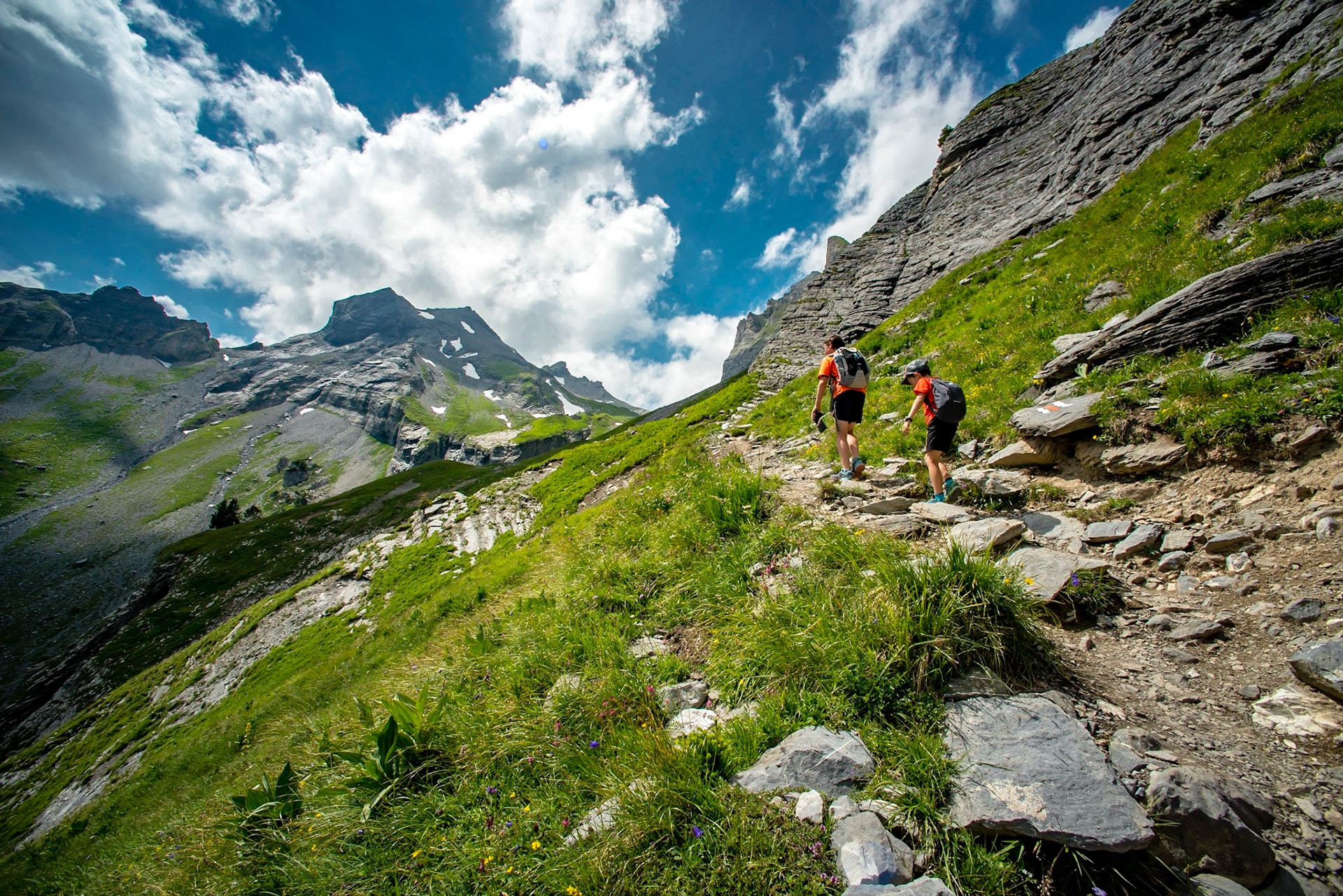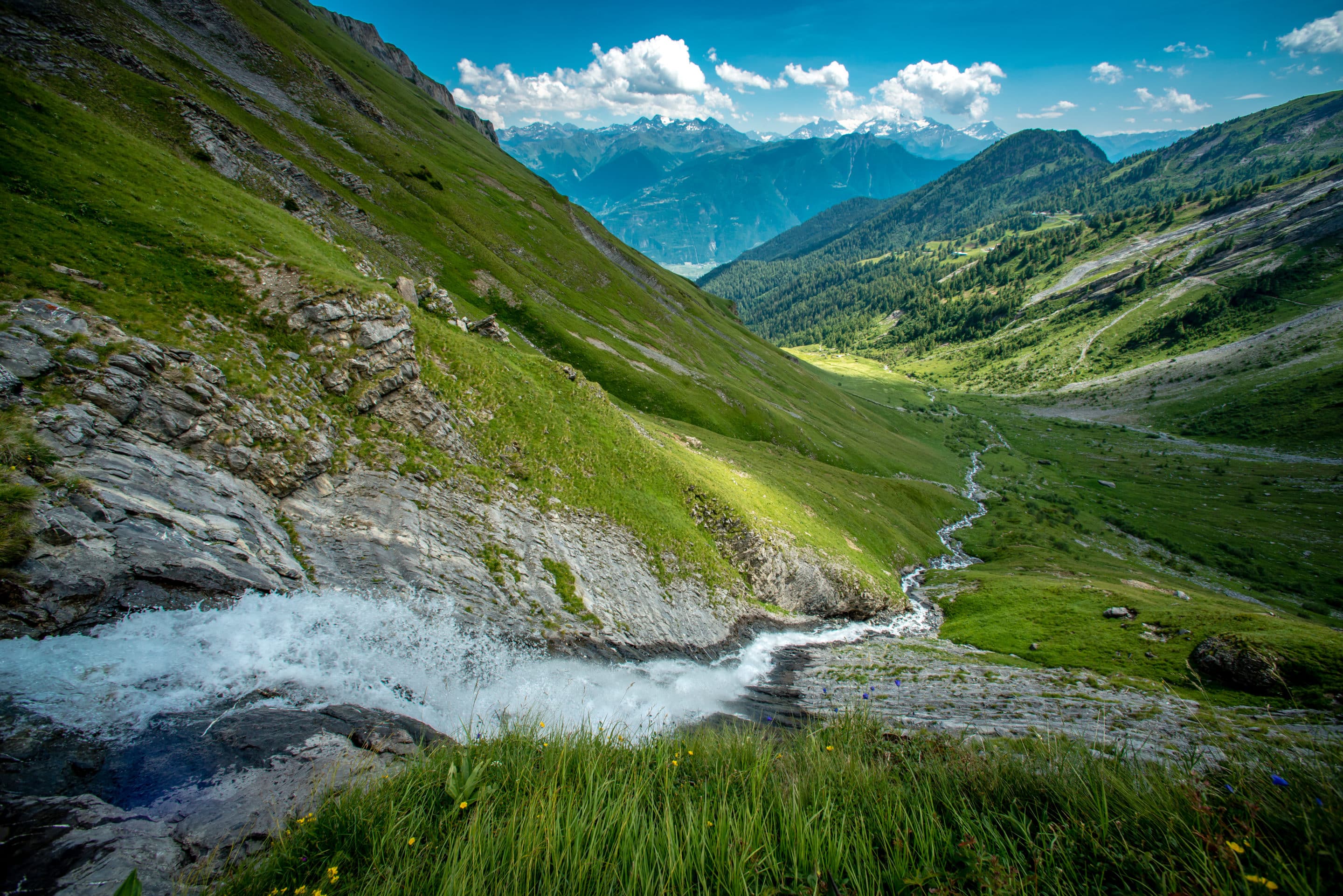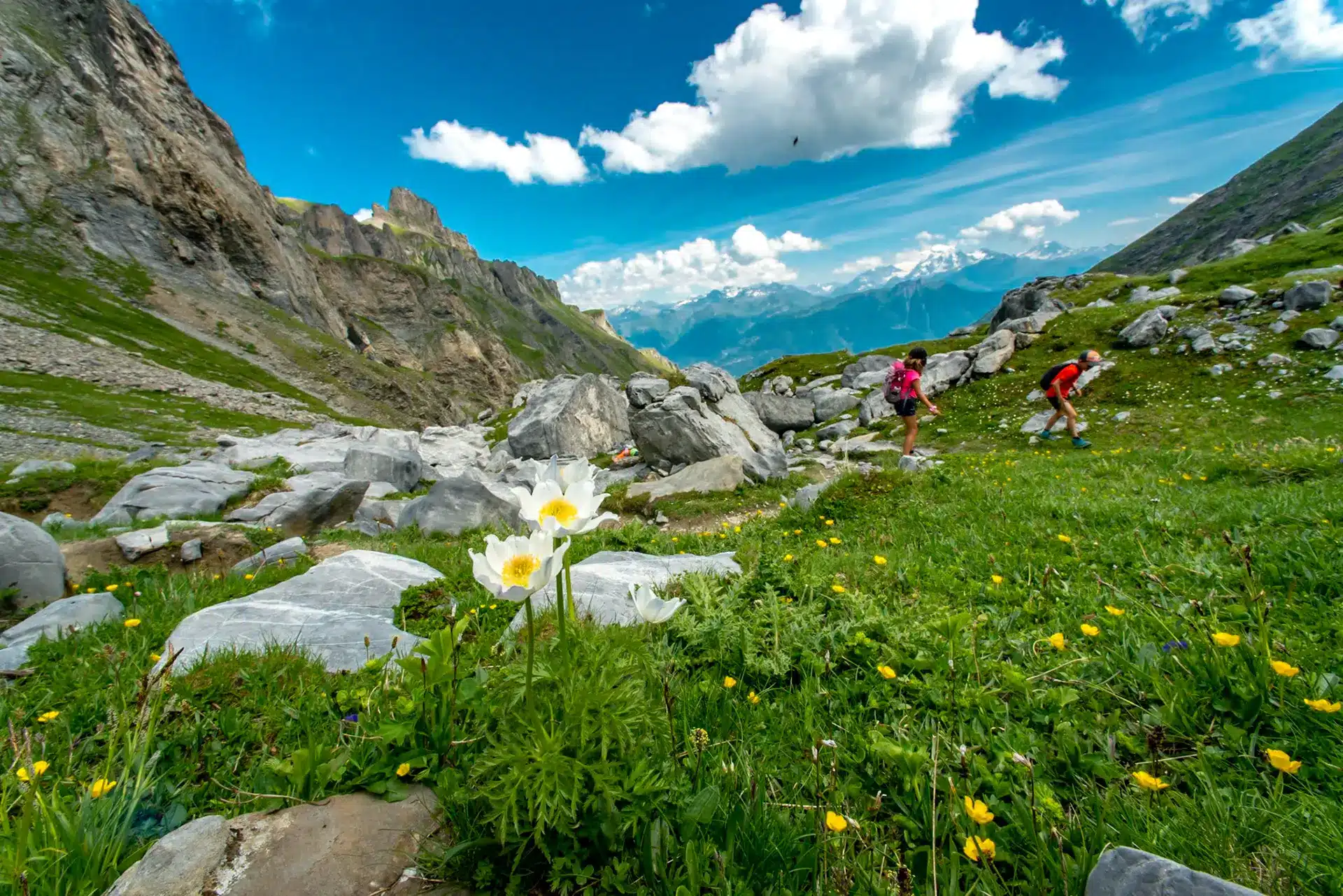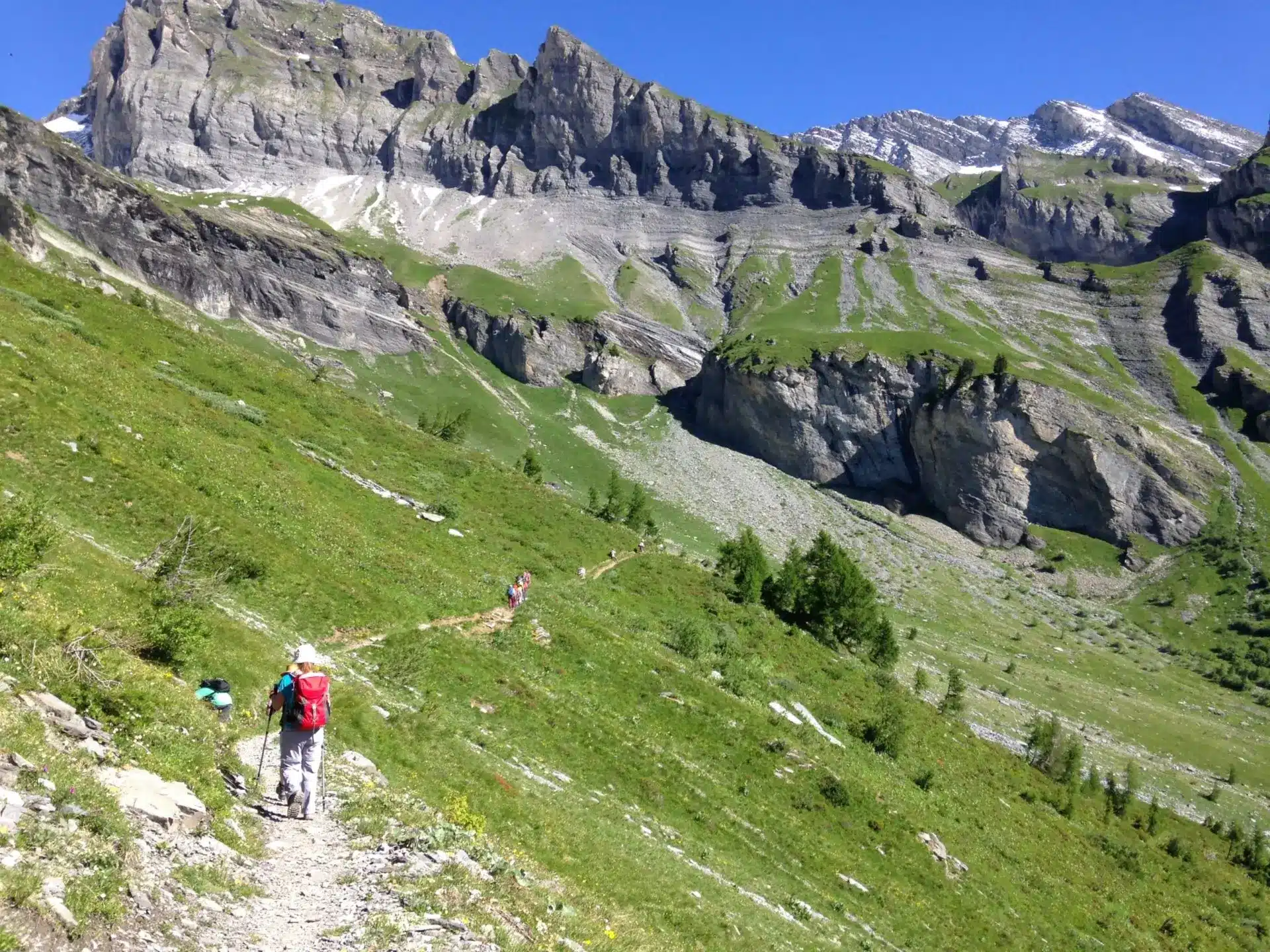Rambert tour
Set off on an adventure from Jorasse and follow a charming trail along the hillside to the Pierre à Vatserou. From there, the challenge intensifies. With each bend, the trail climbs higher, leading you to the peaceful plateau of Plan Coppel, nestled in the bed of the Salentse river, Ovronnaz’s lifeline. The ascent continues, guiding you to the cirque of Plan Salentse, a final plateau framed by the summits of Petit and Grand Muveran. Keep going — a few more switchbacks along the slope, and you’ll reach the Rambert hut and the nearby pass, a well-deserved reward for your efforts.
A breathtaking panorama of the Valaisan Alps stretches before you, from the Matterhorn to Mont Blanc, passing by the Combins and the Dents-du-Midi. Your eyes will be captivated. And who knows — with a bit of luck, you might even spot an ibex, a noble resident of these high altitudes! Returning towards the pass, the path heads east and descends through the vast grassy slopes dotted with scree of the Outannes. The route continues through the alpine pastures of Chamosentse and Loutze. Don’t miss the chance to enjoy a comforting break at the Loutze refreshment hut.
Your journey eventually brings you back to the resort at Tourbillon. If you wish, you can take the Petite Corniche to return to the Jorasse chairlift parking area.
Access to the Tour via the Jorasse chairlift.
Car park at the start of the chairlift.
Catering: Jorasse mountain restaurant.
Features
Length
13.40 km
Difficulty
Medium / T3
Duration
5h30 (no break)
Height difference
+787 m / -1344 m
Minimum altitude
1362 m
Maximum altitude
2584 m
Starting point
Jorasse arrival of the chairlift
Point of arrival
Jorasse arrival of the chairlift
Period
June to October depending on snow conditions
Did you know ?
In 1863, Eugène Rambert, a fervent mountaineer and naturalist from the canton of Vaud, was an influential founding member of the Swiss Alpine Club. His legacy is marked by the famous five-volume series entitled "The Swiss Alps".
Dating back to 1895, the very first hut was painstakingly transported from Lausanne to Riddes by train, then hauled by cart, mule and man to its final location on the Frête de Saille. In 1952, the hut was rebuilt at La Crête à Moret, a safer site, and enlarged to accommodate up to 44 people. In 2015, the hut underwent a renovation and extension, improving its facilities.




